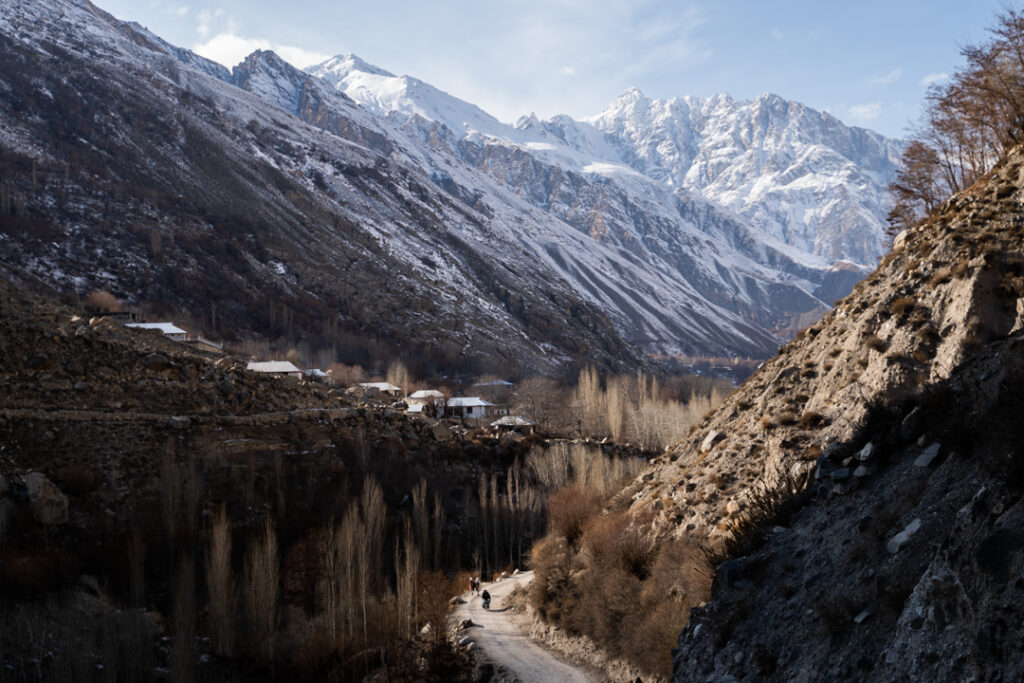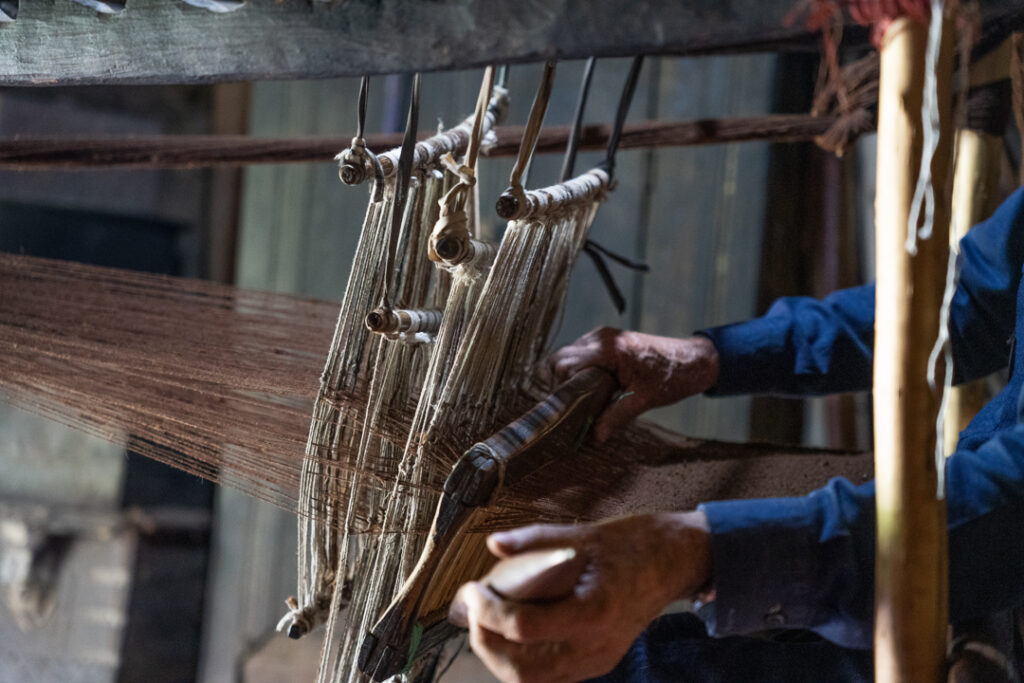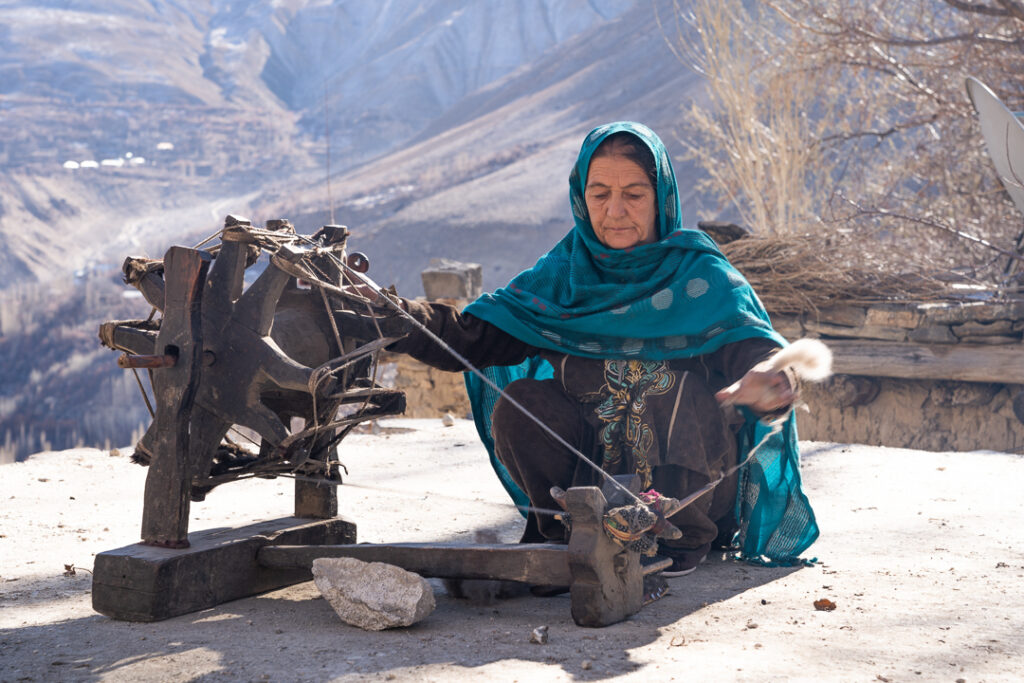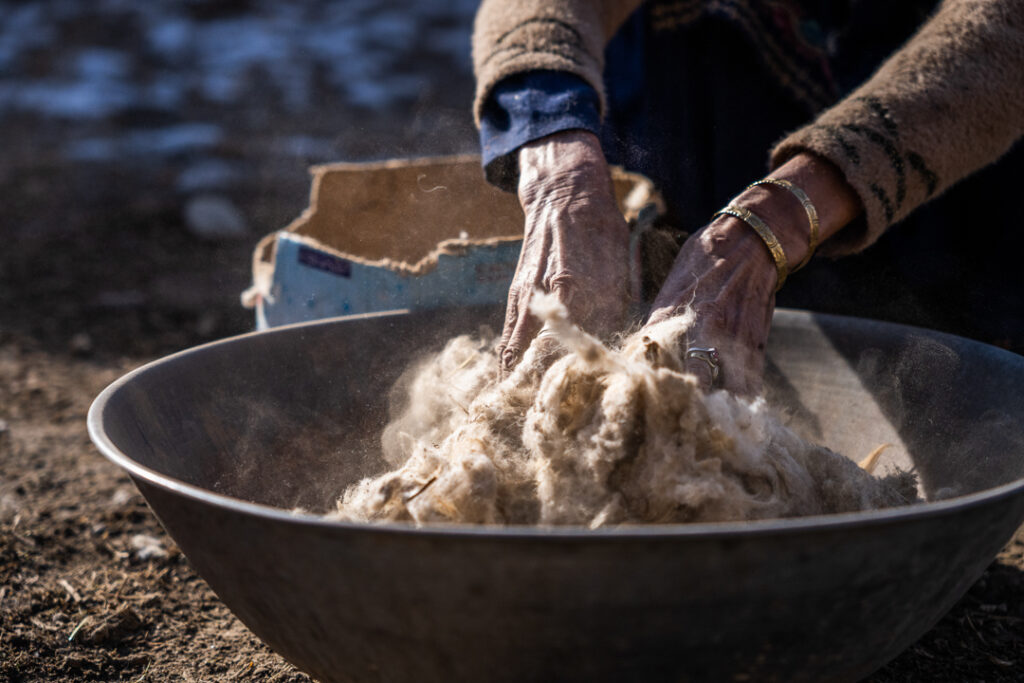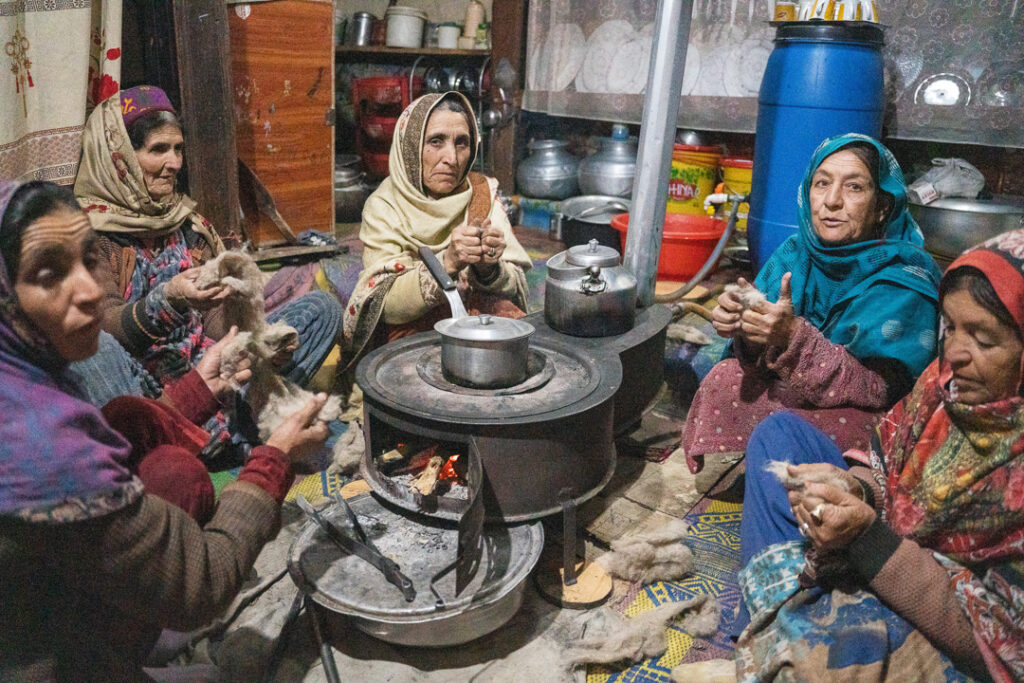Adil Iqbal finds a remote valley in Pakistan where women gather on a winter evening to keep their culture alive through weaving.
In the remote valleys of Chitral, nestled in the rugged mountains of north-west Pakistan, the craft of making Chitrali shu—a handwoven woollen fabric—is a story of both heritage and resilience. The intricate process of creating shu is not just a craft; it’s a deep-seated cultural identity, a livelihood, and a form of resistance against the encroaching tides of modernity.
I am a Scottish Pakistani artist currently in the process of developing an enterprise that safeguards and rejuvenates the art of Chitrali shu. I am engaged in a two-year EMKP project aimed at documenting the endangered practices of making Chitrali shu. I explore how the handwoven shu is not just a fabric but a vital cultural emblem that has sustained families and communities through centuries.
Cultural historian Dr. Inayatullah Faizi highlights the economic significance of shu within his community, where it was not only a utilitarian product but also a form of artistic expression. The delicate fingers of artisans crafted the “Zhil” quilt and “Paitawa”, a wrapping for the legs. As the sun rose on this ancient craft, the landscape evolved, introducing the “Raghz” shirt, “Shoka” overcoat, and the iconic “Pakol” Chitrali cap. Each piece, sculpted from the shu fabric, encapsulates the essence of the land. In olden times, every Chitrali home was a tapestry of self-sufficiency. The “Takht,” large white blankets gifted to brides, symbolised new beginnings. The eighteenth-century “Chogha,” a woollen coat embroidered with silk threads, was a ceremonial beacon. By the twentieth century, it modernised, showcasing the harmony of ancient craft and contemporary artistry.
“The phrase, “Har Chamuto tan hunar” which means every finger of her hand has its own skill, highlights the respect for craftsmanship. It wasn’t just about creating garments; it was about weaving stories, preserving culture, and ensuring survival” Dr. Inayatullah Faizi
The process of making shu is communal and intricate, beginning with the rearing of sheep, which were considered a vital asset to a family’s livelihood. Each household managed a few sheep, which were often tended by women and young daughters, symbolising their crucial role in the pastoral economy. Shearing was predominantly a male task, performed by skilled individuals known as the community’s shearers. Women, on the other hand, were custodians of the wool post-shearing, engaging in cleaning, teasing, and carding the wool. These stages were critical in preparing the wool for spinning, a skill that required finesse and was also predominantly managed by women. The dyeing process, another critical stage, utilised natural dyes derived from walnut husks, a resource abundantly available in the region. The spun yarn would then be used to create the warp and weft for the shu looms.
Shireen Khan, a venerable weaver with over thirty years of experience, sits among the wooden frames of his loom, his hands expertly manoeuvring the warp and weft. Shireen learned this craft from his uncle, a master weaver himself who was part of a lineage that treated weaving, not just as a profession, but also as a cultural inheritance. This craft, passed down through generations, became a part of Shireen’s identity and his way of connecting to his heritage. His village, Royee, in Garam Chashma has long been a cradle for this traditional craft, where the making of shu is more than just creating fabric; every knot has a purpose and a soul, echoing the teachings of his forefathers.
Souz boyan ae shu berang zindagio shutrar,
thasurko ghon gherduman falako makuwa awa.
A woollen fabric is being woven of the thread of colourless life. I am forced to revolve like a “Thasuruk” inside “ Maku” of the mortal world. Beghash, a poet from Chitral. (“Thasuruk” is a bobbin, a 8-10 long hollow piece of wood, which holds rolls of single-ply thread in the boat shuttle for weaving. “Maku” is an oval, boat-shaped wooden shuttle for weaving).
“These looms were made by the prophets”
Shireen recalls his early days as a weaver, his hands inexperienced and often leading to a fabric so thick it resembled a blanket rather than the finely woven shu intended. It was a learning curve where each thread taught him the balance between force and finesse. “When you force the weaving, it becomes thick; when done normally, it becomes thin,” Shireen explains, illustrating the delicate art of tension in weaving. Despite the advances in technology, the essence of making shu remains tethered to traditional methods. “These looms were made by the prophets,” Shireen says, emphasising the sacredness of his tools. There is a blessing in the manual labour involved in shu making—a blessing that is absent in more commercial or mechanised forms of production. This belief underscores an ethos prevalent in many artisan communities, where the value of handmade goods extends beyond their material utility to embody deeper cultural and spiritual significance.
- Kushtan spinning in Royee village, 2022, photo credit Feroza Gulzar
- artisan mixing raw wool, garam chashma valley, photo credit Feroza Gulzar
Kushtan, Shireen Khan’s wife, explains that crafting perfect white shu begins with meticulously teasing wool to ensure no other coloured fibres are mixed in it. It remains pure white, akin to fresh milk. This involves forming and spinning the wool into yarn, a skill-intensive process that includes creating a double-sided warp on a spinning wheel. The yarn is then woven into fabric on a loom, with the final product submerged in warm water to enhance its quality.
Additionally, shu production is integral to social rituals, such as the winter evening wool-teasing gatherings known as geeve, where 9-10 girls share stories and maintain traditions. These sessions not only foster community engagement but also spur competition, enhancing the quality of shu. The involvement of skilled women and adherence to traditional superstitions underscore the cultural significance of precise shu-making techniques.
Despite their passion, these artisans face significant challenges. The global market demands innovation and efficiency, often at the cost of traditional methods. The younger generation’s disinterest in labour-intensive crafts poses a threat to the survival of shu making. Yet, these makers remain hopeful. “By teaching our new generation, we keep our culture alive,” Shireen Khan asserts, who is eager to pass on his knowledge.
The connection between land, ecology, and climate change is profoundly integral to the production of chitrali shu. This craft relies on the health of local ecosystems, as the quality of the wool is directly affected by the environmental conditions in which the sheep graze. Changes in climate, such as irregular rainfall patterns and rising temperatures, can lead to degraded pasturelands, thus impacting the quality and availability of the raw materials needed for shu.
Pakistan is ranked as the fifth most vulnerable country to climate change according to the Global Climate Risk Index. It experiences rising temperatures and frequent floods, endangering the livelihoods dependent on pastoral farming. This situation emphasises the need for sustainable practices in land management among these communities, which not only help preserve their traditional craft but also contribute to broader environmental conservation efforts. By maintaining a harmonious relationship with the land, the artisans ensure the continuation of their craft and the well-being of their environment, creating a sustainable model that resonates with global ecological goals.
As Chitral navigates the crossroads of tradition and modernity, the story of shu is a poignant reminder of the region’s heritage. This isn’t just about making fabric; it’s about weaving the past with the present and carrying forward a legacy that defines the community’s identity and sustains its economic foundations. The resilience of these artisans symbolises a bridge between generations, a beacon of hope that traditional crafts will not merely endure but flourish.
Through their stories, the looms of Chitral continue to weave, quieter now, yet as vibrant as ever, crafting not just fabric but the very fabric of life in the highlands of Pakistan. The threads of tradition, spun from the past, stretch into the future, promising continuity and renewal in the face of changing times.
About Adil Iqbal
 Adil Iqbal is a Scottish-Pakistani cultural practitioner with over 15 years of experience working alongside craft communities in Chitral. He has produced numerous films and led several interdisciplinary creative projects. He leads Twilling Tweeds, an initiative dedicated to preserving cultural heritage and leveraging craft and design for well-being. Currently, he is spearheading a two-year project aimed at documenting the endangered practices of making Chitrali shu, a handwoven woollen cloth. This project is funded by EMKP and hosted by the National Museum of Scotland. Visit www.adiliqbal.co and follow @twilling_tweeds
Adil Iqbal is a Scottish-Pakistani cultural practitioner with over 15 years of experience working alongside craft communities in Chitral. He has produced numerous films and led several interdisciplinary creative projects. He leads Twilling Tweeds, an initiative dedicated to preserving cultural heritage and leveraging craft and design for well-being. Currently, he is spearheading a two-year project aimed at documenting the endangered practices of making Chitrali shu, a handwoven woollen cloth. This project is funded by EMKP and hosted by the National Museum of Scotland. Visit www.adiliqbal.co and follow @twilling_tweeds

